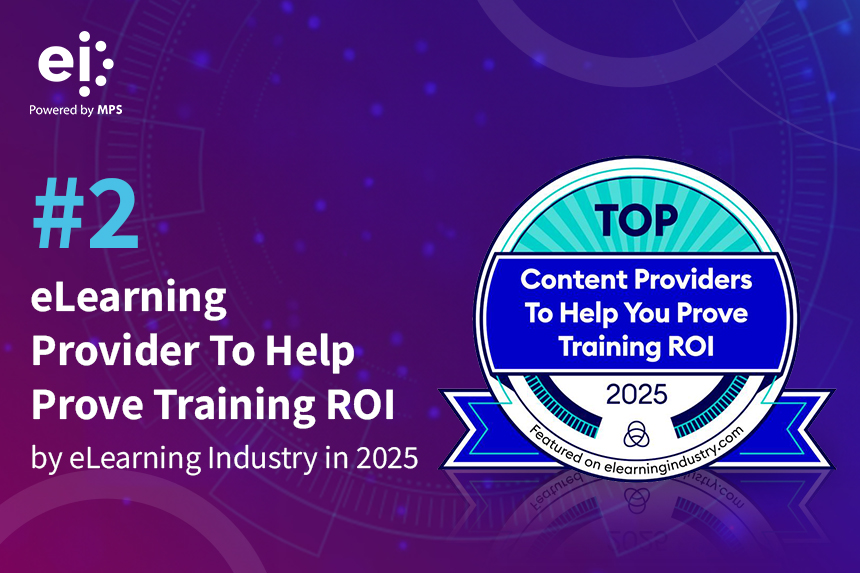
5 Examples Of ILT To Blended Or Fully Online Training
Even though blended training offers significant advantages over ILT training, its impact is highly dependent on how you arrive at the “right blend”. This depends on several factors, the top 2 of which are:
- The nature of the content, and whether it is amenable to be delivered in a blended training or fully online training format.
- If there is a need for an instructor intervention to meet the learning mandate.
At EI, our approach focuses on identifying which key aspects of a facilitated session must be retained, and which ones will offer a better impact if they are moved to an online delivery. Thereby, the training delivery would map to:
- Model 1
A significant component of face-to-face, ILT training, and a small component of online training. - Model 2
An even mix of face-to-face, ILT training, and online training. - Model 3
Significant online learning with short and focused face-to-face, ILT training.
Before identifying the success factors to handle this transformation effectively, let’s look at the definition and benefits of a blended training approach.
What Is A Blended Training Approach?
Blended training, or hybrid training, is a combination of different learning techniques offering the best from both Instructor-Led Training (ILT) and online training (eLearning or mLearning).
The conversion of ILT training to blended or fully online training has seen a steady increase in the last few years. The factors triggering the growing rate of adoption and conversion of Instructor-Led Training, or ILTs, into blended or online training are 2:
- The organization’s need to use the same budget to reach out to a wider audience in a shorter time and with a consistent message.
- The learner’s demand for self-paced learning that is available on the device of their choice and can be taken on the go.
What Are The Key Gains You Will See As You Move To Blended Training Or Fully Online Training From The Existing ILT-Based Approach?
As we have noted, the triggers for adopting blended training or fully online training are linked to the changing learner and organizational needs. As an extension, there are several benefits to learners as well as businesses, as shown below:
Benefits For The Learners
- Provides a better control to the learner. They can learn at their own pace (rather than the pace set by the instructor of the peer group).
- They have access to online resources even if they missed the ILT sessions.
- They can use the accessible online resources to refer to, even after the ILT program is over.
- The online platforms used to provide blended training offer collaboration features that learners can continue to use (with instructors as well as other learners) even after the session is over.
- Research confirms that the impact of blended training is higher as compared to ILT sessions on account of higher retention levels.
Benefits For The Organizations
- Organizations can reach a wider audience in a shorter time.
- Furthermore, the conversion of ILT training to blended training or online training shortens the seat time of the training. (For instance, a 4-day face-to-face workshop can now be converted to a 4-hour online training and a 1-day workshop).
- In blended training, instructors can use online assessments and have a sense of the impact in a much shorter time.
- Instructors can continue to offer learning nuggets even after the facilitated session is over, as the connection with the learner can persist with online resources.
- The online components of blended training can offer more engaging learning strategies like microlearning, learning paths, gamification, social learning, and so on. A combination of these approaches ensures that the learning is sticky and continues to post the facilitated session.
How Can You Determine When Should You Opt For Fully Online Or Blended Training?
Assessing if fully online or a hybrid training is the right answer depends on several aspects. The key aspects are:
- Nature of the current ILT training program: Can the same impact be achieved with an alternative training delivery format?
- How will learners respond: Are they ready for a fully online format or would they prefer a hybrid or blended approach?
- Are the technology support aspects in place to manage the blended training format?
- Are the required support systems for instructors in place to enable them to manage a blended training format?
To understand this better, let us look at some of the typical corporate training needs that will come up for the transition.
I have added 5 examples that showcase how we handled the transition of an ILT program to blended training for these 5 corporate pieces of training. Given the dynamics, a different blend or a fully online training approach was used in each situation.
1. Induction And Onboarding Training
This program should certainly be a blended program. Although, you can determine the increased weightage on online training by looking at your ability to manage the roll-out. For instance, organizations with a high geographical spread and staggered intake of employees would find a higher online component to be beneficial. Similarly, for the senior management or executive training, a blend of coaching and mentoring is crucial and can be achieved as an add-on to the online training.
- Example
For our own induction and onboarding training, we transitioned from a fully ILT-based format to a blended training format. - Online component
The online format features microlearning media pieces (largely videos) and guided exploration through very simple and intuitive interactivities. - The facilitated component
The entire learning journey is divided into multiple stages. Once each stage is over, there are supporting facilitated sessions. These focus on recap, reinforcement, and interactions with peers and seniors.
2. Tools Or Application Software Training
This can be converted to a fully online training. After this, learners can practice on the actual tool. Optionally, you could offer the practice sessions with an instructor support.
- Example
We have used a combination of approaches shown here, depending on the complexity of the application and the availability of a trainer to support the program. - Online component
The online component typically uses a “Teach, Try, and Test” model to show the key aspects of the software. - The facilitated component
Post the online training, learners can move to a practice on the actual tool. Alternatively, the practice session can be moderated by a trainer and post the practice session, there can be another online assessment.
3. Compliance Training
This too can be converted to a fully online training. You can opt to increase the impact by adding Performance Support Tools or PSTs, post the online training. These PSTs can be used to reinforce the primary message and provide the required nudge to learners towards the desired behavioral change.
- Example
For our internal compliance training on Information Security, we opted for a fully online approach. - Online component (for primary training)
We created an online course on Information Security. - Performance Support (to trigger the required behavioral change)
However, we felt that the online course may not be sufficient to meet the compliance mandate. So, we added a Performance Support Tool or PST that is offered 60-90 days post the formal training. This has a list of factors to watch out for and reinforces the primary learning.
4. Professional Skills Enhancement Training
This can be handled through a blended approach with a significant percentage of learning assets made available as online resources. It can be enhanced through social or collaborative learning and must have a provision for coaching and mentoring.
- Example
In this case, although a major part of the training (on Financial Literacy for athletes) was classroom-based, we digitized the classroom delivery experience through an app which enabled the facilitator to track classes, as well as share participant guides and handouts online. - Online component
All the resources (ILT decks, presenter and participant guides, and handouts for classroom activities) were made available online. - The facilitated component
The trainer would use the app to access the resources on their tablet and manage the session (within the same class or virtually).
5. Soft Skills Training
This, too, can be handled through a blended approach that provides a significant percentage of training through online resources.
- Example
In this case, we recorded the trainer sessions (on Project Management) and used them to create an online version of the training. - Online component
Rather than a simplistic approach of the trainer talking and the supporting PowerPoint slides appearing in another window, we opted for an interactive video-based format to bring the material to life. - The facilitated component
The focus of the facilitated sessions shifted to supporting workshops with experts and peers focusing on the application of the learning, problem-solving, real-life situations, best practices, and so on.
As you would note, the process of conversion of ILT material to blended training or fully online training can be applied to most of your training needs. However, you need to review several key factors as you begin the process of transformation.
- These include what the nature of the content is and if the same or better impact can be created with the new training format.
- Additionally, you need to evaluate the organizational and learner readiness for such a transition to a new format.
With all these cues, you will have the right perspective to opt or not to opt for a fully online or blended approach.
If you have any specific queries, do contact me at apandey@eidesign.net.
Read More:
- Tips And Best Practices To Create Highly Effective Blended Training Program Design
- 5 Reasons Why You Should Adopt Blended Training
- How To Convert Instructor-Led Training To eLearning
- 5 Examples On How To Convert Induction And Onboarding Program To Blended Or Fully Online Training
- Free eBook: Your Step By Step Guide to Design High-Impact Blended Training Programs



